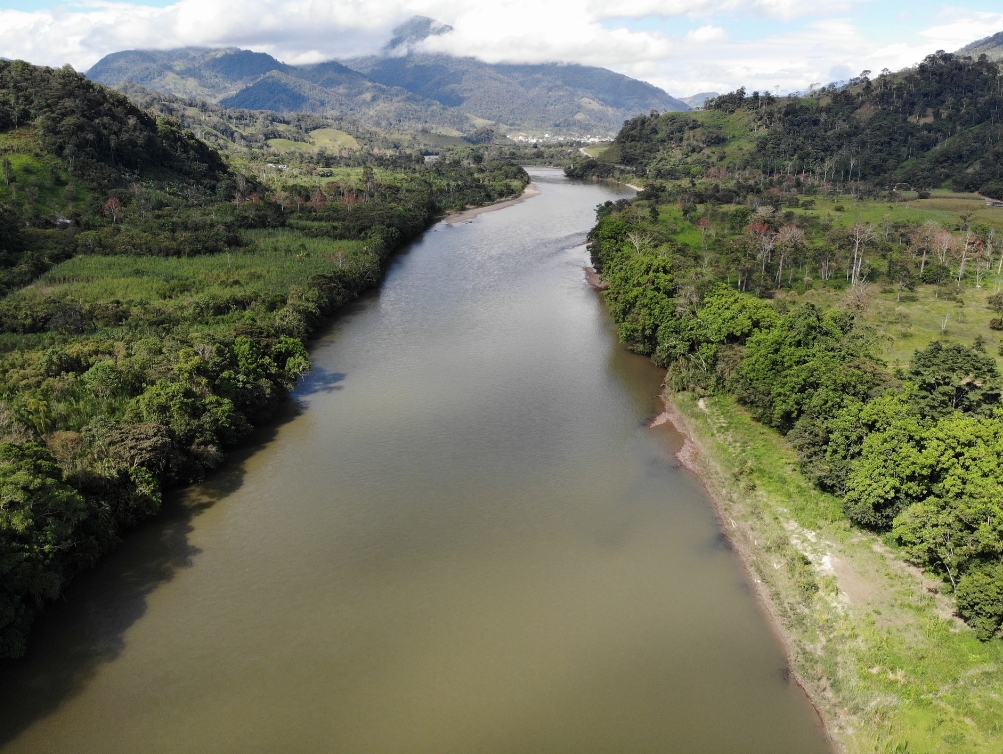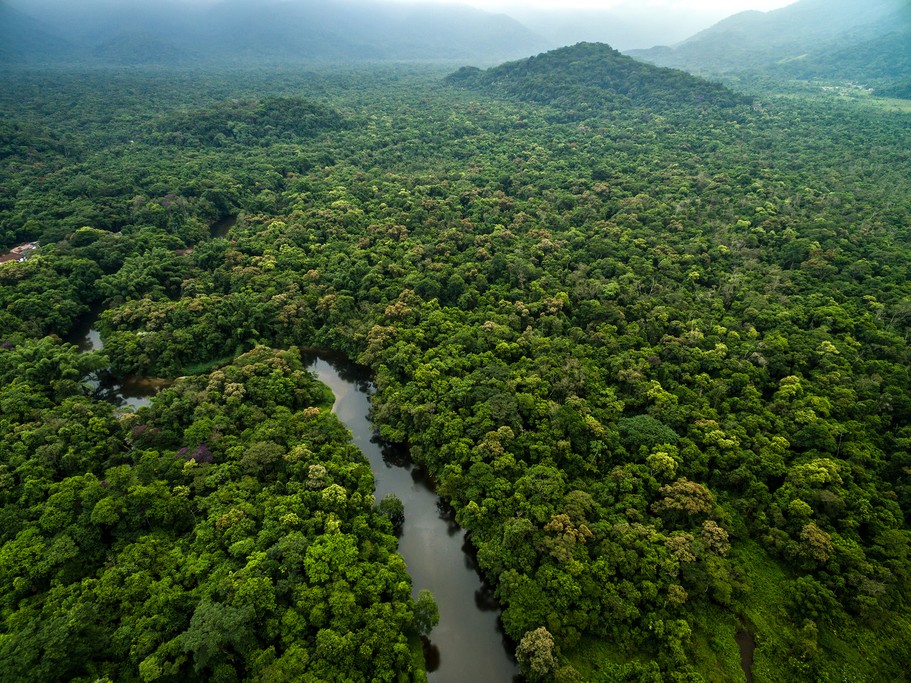As businesses grapple with their environmental impact, the role of carbon removal credits has come to the forefront of sustainability efforts. In 2021, global carbon emissions reached a staggering 36.3 billion tonnes, marking a 6 percent increase from the previous year.
This upward trajectory in emissions, a trend that has persisted since the Industrial Revolution, has elevated atmospheric carbon dioxide concentrations to over 400 parts per million, a figure last recorded during the Pliocene Epoch, approximately 2.6 to 5.3 million years ago.
In this context, carbon removal credits emerge as a critical tool for businesses aiming to neutralize their carbon footprint and contribute to reversing the tide of climate change.
What is Carbon Removal?
Carbon removal aims to extract CO₂ from the atmosphere, a crucial step in addressing climate change. Carbon removal projects encompass a range of strategies, from natural processes like reforestation, which utilizes trees to absorb CO₂, to advanced technologies such as direct air capture, biochar, and enhanced rock weathering.
These efforts form the core of the voluntary carbon market, where businesses can purchase carbon removal credits from projects that effectively remove carbon gasses from our environment in order to mitigate their carbon emissions. Through carbon offsetting projects, businesses can purchase carbon removal credits to offset carbon emissions that they cannot eliminate from their business operations. Carbon credits are the currency used for offsetting emissions.

Carbon Removal Credits And Carbon Offsetting
Carbon offsetting is a practice that allows individuals and businesses to compensate for their carbon dioxide emissions by investing in environmental projects designed to address emissions. This process can involve two main strategies: avoidance and removals.
- Avoidance projects prevent emissions from occurring in the first place, such as investing in renewable energy sources like wind or solar power, which displaces fossil fuels.
- Removals, on the other hand, actively remove carbon dioxide from the atmosphere. Examples include reforestation projects, where trees absorb CO₂ as they grow, and direct air capture technology, which physically extracts carbon from the air and stores it.
Beyond their primary goal of carbon avoidance or removal, these carbon offsets projects often yield significant additional benefits. For example, forest conservation projects not only aid in carbon sequestration but are also vital for preserving biodiversity. These co-benefits amplify the value and impact of carbon offset projects, making them a key component in the pursuit of a more sustainable and equitable world.
Carbon Removal Credits, also known as carbon offsets, are a financial instrument representing the removal of one tonne of carbon dioxide (CO₂) or an equivalent amount of other greenhouse gases (GHGs) from the atmosphere. These credits are generated through various carbon removal projects, such as reforestation, afforestation, direct air capture, and enhanced weathering, among others. Each project actively removes CO₂ from the atmosphere, either by capturing it directly or by enhancing natural processes that absorb CO₂.
Here’s how they work in practice:
- Creation: A carbon removal project that meets certain standards and criteria generates credits by quantifiably removing GHGs from the atmosphere. The amount of CO₂ removed is verified by independent third parties to ensure accuracy and integrity.
- Certification: Once verified, these credits are certified by recognized standards or registries, such as Verra or the Gold Standard. This certification process ensures that the carbon removal is real, measurable, additional (meaning it wouldn’t have happened without the project), and permanent.
- Sale and Use: Businesses or individuals can then purchase these credits to offset their own carbon emissions, effectively balancing out their carbon footprint. By buying carbon removal credits, they are investing in projects that remove CO₂ from the atmosphere, contributing to the fight against climate change.
- Retirement: Once purchased and used to offset emissions, carbon removal credits are “retired” to prevent their reuse, ensuring that each tonne of CO₂ is only offset once.
Why Businesses Should Invest In Carbon Removal Projects
In the face of escalating climate change, businesses have a pivotal role to play in mitigating environmental impact. Beyond implementing direct emission reduction strategies, investing in carbon removal projects offers a comprehensive approach to achieving sustainability goals. This not only aligns with global efforts to combat climate change but also meets increasing legislative requirements and consumer expectations for environmental responsibility.
Here are some of the most compelling reasons for businesses to invest in carbon removals:
- Legislative Compliance: Stay ahead of regulations like AB 1305 and EU Directives that mandate clearer environmental reporting and sustainability practices.
- Consumer Demand: Meet the growing consumer expectation for eco-friendly products and practices, enhancing brand loyalty and market competitiveness.
- Environmental Impact: Contribute to global efforts to reduce carbon emissions, supporting the transition to a low-carbon economy.
- Market Leadership: Position your business as a sustainability leader, setting a benchmark in your industry for environmental responsibility.
EcoCart is here to make your journey to sustainability a breeze. Starting with our Life Cycle Analysis (LCA) service, we dive deep to pinpoint exactly where your business can cut down on emissions, making it easier for you to see where changes can have the biggest impact.
Once you’ve tackled those emissions head-on, our sustainable checkout widget comes into play, giving your customers the power to offset their purchases right when they check out. It’s a simple addition to your online store that calculates the carbon footprint of each order and offers a way to balance it out with contributions to certified carbon removal projects.
It’s all about making sustainability part of the shopping experience, showing your customers you care about the planet as much as they do. By teaming up with EcoCart, you’re not just ticking boxes for compliance or riding the wave of consumer demand; you’re making a real difference in the fight against climate change.
Download our FREE ebook:

Want to know where your business stands? Get your sustainability scorecard with our quiz:
The Two Categories of Carbon Removal
There are two carbon removal categories according to Trove’s Carbon Industry Classification: nature restoration and carbon engineering. These two approaches to carbon dioxide removal have different methodologies, potentials, and limitations, but both are crucial in our quest to reduce atmospheric CO₂ levels and combat climate change.
Nature Restoration
Nature-based carbon removal harnesses the power of our planet’s natural ecosystems—forests, wetlands, agricultural lands, and oceans—to act as effective carbon sinks.

Nature-based carbon removal strategies come in several forms:
- Forestry Practices. Forestry practices like reforestation, the process of replanting an area with trees, are prime examples of nature-based carbon removal. Avoiding further deforestation also falls under this category. Through preserving and expanding our forests, we enhance the natural carbon removal process, as trees absorb CO₂ during photosynthesis and store it in their biomass.
- Wetland-related Practices. Conserving existing wetlands is another crucial nature-based carbon removal strategy. These ecosystems are potent carbon sinks that can store large quantities of carbon in their plant life and soils. This includes initiatives like mangrove restoration.
- Restorative Agriculture. This practice involves modifying farming methods to enhance carbon sequestration. Techniques may include cover cropping, rotational grazing, and reducing tillage. Promoting healthier soils and restorative agriculture improves crop yields and increases the soil’s capacity to absorb and retain carbon.
- Ocean-based Practices. Planting kelp and other forms of marine vegetation can also contribute to carbon sequestration. These plants absorb CO₂ and lock it away in underwater ecosystems.
While nature-based carbon removal techniques are generally cost-effective, trees offer the most efficient and affordable method of carbon sequestration. Each metric tonne of carbon dioxide removed through afforestation costs merely between $5-50.
Carbon Engineering
While nature-based solutions harness our ecosystems’ inherent carbon storage capacities, technology-based carbon removal refers to man-made interventions designed to capture and reduce the amount of carbon dioxide in the atmosphere. There are a few different types of carbon removal technologies:
- Direct Air Capture (DAC). This technology directly extracts CO₂ from the atmosphere, like a supercharged tree. The captured CO₂ can either be sequestered in deep geological formations, reversing emissions, or repurposed for various industrial processes. DAC technologies divide into two main types: solid and liquid DAC. Solid DAC operates at ambient to low pressure and medium temperature, while Liquid DAC works with an aqueous solution at high temperatures. Both methods present significant opportunities for future research, innovation, and cost optimization. There are criticisms about it as a scalable solution given the challenges of durable, long term storage.
- Carbon Capture, Utilization, and Storage (CCUS). This versatile set of technologies captures CO₂ from industrial waste gasses and directly from the atmosphere, then stores it underground or repurposes it. Capturing CO₂ from industrial waste gas streams is known as point-source carbon capture. Once captured, CO₂ can be transported to suitable sites for storage—a process known as carbon sequestration—or for utilization.
- Bioenergy with Carbon Capture and Storage (BECCS). BECCS combines the benefits of biomass as a renewable energy source with the carbon capture potential of technologies like DAC and CCUS. It harnesses biomass for energy, captures the emitted CO₂, and stores it, effectively reducing the overall CO₂ levels in the atmosphere. This method, though promising, requires careful consideration of potential impacts on land use, biodiversity, and food security.
As innovative as these technologies are, like natural-based carbon sinks, they aren’t without their downsides. A main challenge? Cost. Per metric tonne of carbon, BECCS costs between $20-100, and CCUS about $80, while DAC costs $500-600 per metric tonne (predicted to hit $250-350 by the end of the decade). These costs rest at levels significantly higher than their natural-based counterparts.
Carbon Removal Examples: 7 Promising Projects
By investing in these carbon dioxide removal initiatives, businesses and individuals can effectively offset their carbon footprint, contributing to the crucial task of lowering atmospheric CO₂ levels. Here are some carbon removal solutions currently paving the way in both nature-based and technology-based carbon removals.
1. Trees & Forest Habitats
Forestry-based carbon removal projects are a cornerstone of nature-based solutions to climate change, tapping into the inherent ability of trees and forests to absorb and store carbon dioxide from the atmosphere. These projects range from reforestation (planting trees in areas where forests have been cut down) to afforestation (planting trees in areas that have never been forested) and forest conservation (protecting existing forests from deforestation).

A powerful example of nature-based carbon removal activities is our Envira Amazonia Project in Acre, Brazil. Spanning over 200,000 hectares, this initiative annually sequesters more than 12 million tonnes of carbon emissions each year by combining forest preservation with sustainable land management. This project not only aids in removing atmospheric CO₂ but also promotes biodiversity, supporting a myriad of species and the ecological balance of the Amazon rainforest.
2. Wetlands
Wetland-based carbon removal projects focus on preserving and restoring wetlands, which are among the most effective carbon sinks on the planet. These ecosystems, including marshes, peatlands, and mangroves, store carbon dioxide in their waterlogged soils, preventing it from escaping into the atmosphere. Restoration efforts often involve rehydrating dried-out peatlands, replanting mangroves, and protecting existing wetlands from drainage and degradation. These projects not only sequester and absorb carbon dioxide but also enhance biodiversity, improve water quality, and provide flood protection.

The Katingan Project in Central Kalimantan Province, Indonesia, exemplifies the power of wetland conservation for carbon removal. Spanning 149,800 hectares, it’s one of the largest intact peat swamp forests in Indonesia, situated within the districts of Katingan and Kotawaringin Timur. This project captures an impressive 7.5 million metric tonnes of carbon annually, safeguarding 157,875 acres of forest.
Its impact extends beyond carbon capture; the project plays a crucial role in reducing carbon emissions, conserving peatlands as vital carbon reserves, and partnering with local communities for sustainable economic development. It also focuses on protecting species of high conservation value, showcasing the multifaceted benefits of wetland restoration. Through initiatives like the Katingan Project, wetland-based carbon removal projects demonstrate their critical role in global climate change mitigation efforts.
3. Algae & Ocean-Based Approaches
In a pioneering partnership with Microsoft, Running Tide uses innovative ocean-based technology to tackle climate change. Over two years, their project aims to safely and permanently remove the equivalent of 12,000 tonnes of carbon dioxide, contributing to Microsoft’s carbon removal efforts.
Their method revolves around enhancing the ocean’s natural carbon removal processes. They deploy carbon buoys made from forestry residue and limestone, seeded with specific algae strains, into the open ocean. The limestone slowly dissolves, restoring the ocean’s alkalinity. Simultaneously, the kelp grows and draws in carbon dioxide through photosynthesis, a natural form of carbon capture. Over time, the kelp sinks to the ocean floor, effectively storing the captured carbon deep in the sea, away from the atmosphere. This technique offers a promising avenue for large-scale, ocean-based carbon removal.
4. Farms and Soils
Farms and soils play a pivotal role in carbon removal efforts through agricultural practices designed to enhance soil health and increase carbon sequestration. These projects focus on transforming agricultural lands into significant carbon sinks by adopting practices such as cover cropping, reduced tillage, crop rotation, and the use of compost and biochar. These methods not only capture and store carbon dioxide in the soil but also improve soil fertility, water retention, and crop yields.
The Boomitra Grassland Restoration project covers over 1.2 million acres of Pampas grasslands across Argentina, Brazil, Paraguay, and Uruguay. Under threat from overgrazing and unsustainable management, these grasslands have significantly declined Soil Organic Carbon (SOC)—an essential element for soil health and carbon sequestration.
Boomitra’s solution involves promoting sustainable practices, like rotational grazing and improved water management, to revitalize SOC levels. These practices help combat climate change and bring about enhanced nutrient cycling, increased yields, and biodiversity, ultimately contributing to food security.
Working hand in hand with local organizations, Boomitra equips communities with agronomic tools and knowledge to optimize carbon sequestration and grassland productivity. This approach provides a new income source for ranchers, protecting regional flora and fauna in the process.
5. Biomass Carbon Removal and Storage (BECCS)
Project Tundra represents a significant leap in BECCS technology, aiming to equip the Milton R. Young Station with innovative CO₂ capture technology.
The project’s mission is primarily to capture about 90 percent of the station’s CO₂ emissions and store them securely underground. The unique system cools gasses and eliminates impurities before employing an amine-based solvent to absorb the CO₂. Heat is then used to separate the CO₂ from the solvent, leaving pure gaseous CO₂, which is then compressed and prepared for geological storage.
Project Tundra boasts the US’s largest fully-licensed CO₂ storage facility, benefiting from North Dakota’s ideal geological conditions. A multilayered rock formation acts as a perfect vessel for CO₂ storage, with numerous sensors to monitor CO₂ movement in the subsurface.
6. Direct Air Capture (DAC)
Located in Wyoming, Project Bison is a pioneering initiative aiming to remove five megatons of carbon dioxide from the atmosphere annually by 2030. Its cutting-edge modular DAC systems filter CO₂ directly from the air. The captured carbon is then safely injected into deep saline aquifers.
Starting with a modest goal of 10,000 tonnes/year in 2023-2024, the project plans to gradually scale up its carbon capture with advancing technology generations—hoping to reach a 5 megatons/year goal by 2030.
Organizations aiming for net-zero targets offset their emissions by purchasing carbon removal credits generated by the project, directly contributing to combating climate change. Importantly, each carbon credit also comes with a thorough third-party verification report, ensuring the captured CO₂ is securely stored for over 1,000 years.
7. Carbon Mineralization
Project Vesta is pioneering Coastal Carbon Capture science, an innovative climate mitigation approach. Using finely ground olivine, they aim to speed up the natural process of oceanic CO₂ absorption. The process not only captures atmospheric CO₂ but also counteracts ocean acidification, offering a dual benefit.
The project is undergoing rigorous studies to understand the impact on ecosystems and organisms and biogeochemical studies to quantify the CO₂ sequestered.
Offer Carbon Removal Offsets To Your Customers
EcoCart’s checkout widget enables businesses to seamlessly Requ offer customers the option to offset the carbon emissions of their purchases. It automatically calculates the emissions for each order and suggests a specific contribution to neutralize its impact, funneling these contributions directly to certified carbon removal projects. These carbon offset projects are rigorously selected for their impact on combating climate change. Integrating EcoCart not only strengthens your sustainability efforts but also actively involves your customers in meaningful climate action.
Take action now: Integrate EcoCart’s sustainable checkout widget and join the movement towards a greener future. Request a demo today!



